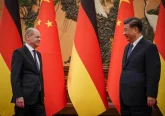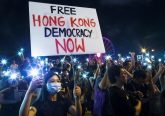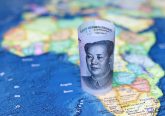As protests in Hong Kong have become more violent, have the demographics of the protesters changed? Political scientists have argued that a shift toward more violent protest action can alienate moderate protesters. Moderates, in this definition, are those who may share common cause with radicals (or those who embrace violent tactics) but reject those tactics. Once alienated, such moderate protesters tend to withdraw their support from a movement and may refrain from participating in protest action in the future.
Hong Kong’s protests seem to have defied this trend. My surveys of protest participants find that the demographic profile of protesters has remained relatively constant even as violence has escalated in the demonstrations. Certain types of protesters who might be expected to have long since become alienated by the violence of Hong Kong’s ongoing protests still turn out to demonstrate peacefully under the same umbrella as their more radical fellow protesters. I deem this solidarity among moderates and radicals to be one of the main reasons for the resilience of the protests in Hong Kong.
From June 16 until July 21, I surveyed 1,395 Hong Kong protesters using a bilingual questionnaire (English and Cantonese) at nine major protest events. I conducted a second set of surveys from September 27 to October 1, this time of 423 people at four more protest events. Between the two survey rounds, efforts to quell the protests led to escalating violence between protesters and the police.
Alienating Violence
Alienation is a common problem for protest movements. In their book Why Civil Resistance Works: The Strategic Logic of Nonviolent Conflict, Erica Chenoweth and Maria J. Stephan analyze hundreds of historical cases of resistance movements and show that nonviolent movements have been far more successful in achieving their goals than violent ones. Violence, in the cases they studied, drove off supporters unwilling to sacrifice their lives, as well as those who lacked the ability to engage in violent resistance. Often, this disproportionately affected the involvement of particular demographics. Nonviolent movements, they conclude, can attract and sustain broad-based mass mobilization because the individual costs that come with participation are much lower and no special skills are needed for joining peaceful protest.
Because moderates and hardliners tend to belong to different socio-economic groups, alienation, or the withdrawal of more-moderate protesters because of actions committed by hardliners that they deem too radical, becomes visible when specific demographic groups drop out. I cannot take full stock of all robust associations between radical protest action and socio-demographics here, but instead look at three most commonly found in the literature: age, income and education, and gender. If alienation had happened following the escalation of violence in Hong Kong, one might expect it to have manifest in a decline in participation of older people, those of higher social class, and women.
In the surveys I took in Hong Kong, the socio-demographic profile of protesters remained largely the same in September/October as in June/July, indicating that alienation of traditionally more moderate protesters, as identified by socio-demographics, has by-and-large not occurred.
1. Age
Many scholars have attributed protests to age and explained this with reference to what Doug McAdam calls “biographical availability,” meaning fewer family and career obligations. Figure 1 depicts the age distribution of respondents in the first round of surveys (pink) as opposed to those in the second (blue). In both samples, the largest age bracket of protesters was that of between 20 and 25. Some additional younger protesters, aged 10-15 years, joined in September/October, but the distributions largely do not align with what one would expect to see if alienation had taken place. While one might have expected older people to refrain from participating as protests grew more violent, my sample comparison showed more protesters aged 35-60 years were present in September/October.
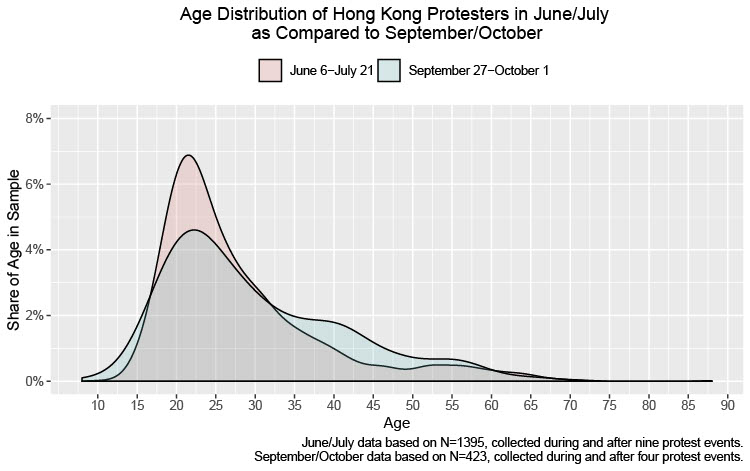
2. Gender
Similarly, based on past studies, one would expect radicalization to go in tandem with the presence of proportionally more male protesters if alienation had occurred. This is not to say that males are per seradicals and female protesters are moderates. On average, however, male protesters have been found to engage in more risky protest action than female protesters, often perhaps due to social and cultural norms. Figure 2 depicts the share of gender categories (male/female/other) during the two survey rounds. Whereas the share of females and other gender identities remained more or less the same at together about 35 percent, respondents stating their gender identity as male are much less common in the second round of surveys.
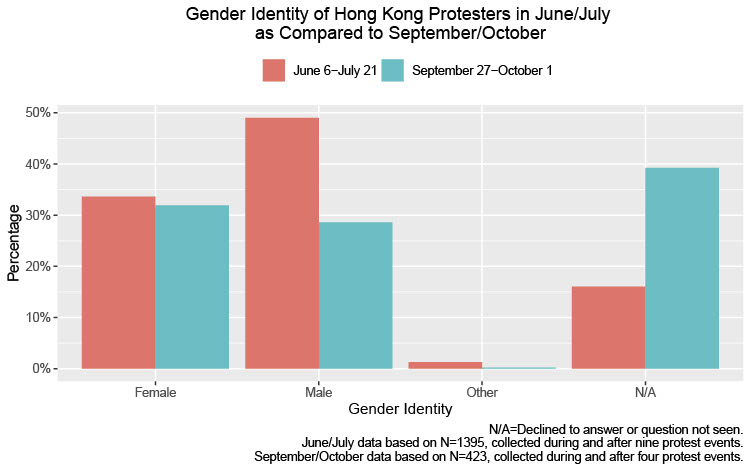
3. Income and Education: Social Class Identity
A third factor associated with aversion to protest amid escalating violence is what social psychologists would call a “higher social class identification,” or the idea that people who identify with a higher social class will think that they have more to lose from protesting, especially once protests turn violent, and will be less willing to engage in radical protest action than people who perceive themselves as belonging to a lower social class. Therefore, with increasingly violent protests, we would expect the relative share of protesters self-identifying as being of “lower class” to increase. While respondents to my surveys, protesters categorizing themselves as “lower class” increased by about 10 percent between the first and second survey rounds, I do not observe a vast and systematic shift toward people self-perceiving as lower class.[1]
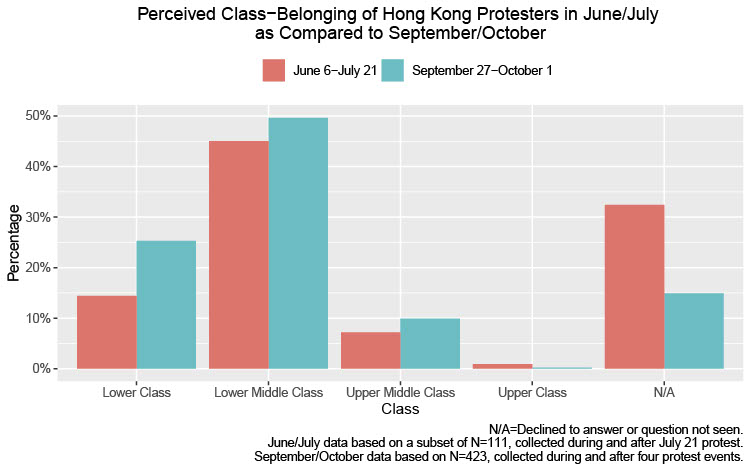
In sum, age, gender, and social class identification do not indicate an alienation of moderate protesters. This does not mean people have not withdrawn from street protests. In fact, many people I know in Hong Kong find street protests too risky and have been deciding to stay at home, even though they are still supportive of the movement. This anecdotal evidence likely applies beyond my personal circle. But the evidence provided above shows that the withdrawal has happened across demographic profiles, indicating that moderate protesters have not quit more often than anyone else.
One could make the counterargument that, in Hong Kong, moderates and hardliners do not differ by the demographics examined above and, therefore, alienation would remain hidden in the data presented here. I deem this unlikely considering that, according to figures the Hong Kong government released in October, one-third of protesters arrested for participating in unlawful assembly, obstructing police, or destructing property were below 18 years old (31.5 percent). The average age in both survey samples is much higher than that (28.05 and 30.03 years, respectively), and both first quantiles are also higher (21 and 21.25 years, respectively). Hardliners seem to be at least younger than more moderate protesters.
Why has violence not dissuaded more moderates from protesting? A likely explanation has to do with (1) the declining trust in Hong Kong’s system of democratic and governmental performance and rule of law; (2) successful framing of the police as excessive and unreasonable and thus responsible for the escalation of violence; and, relatedly, (3) solidarity with hardliners resorting to violence. Various questions in both survey questionnaires offer suggestive evidence for all three of these factors. Table 1 compares the results by survey round:
| How much do you agree or disagree with the following statements… | Round 1: Strongly Agree (%) | Round 1: Strongly Agree (number of respondents) | Round 2: Strongly Agree (%) | Round 2: Strongly Agree (number of respondents) | Round 1: Somewhat Agree (%) | Round 1: Somewhat Agree (number of respondents) | Round 2: Somewhat Agree (%) | Round 2: Somewhat Agree (number of respondents) | Round 1: Neither Agree nor Disagree (%) | Round 1: Neither Agree nor Disagree (number of respondents) | Round 2: Neither Agree nor Disagree (%) | Round 2: Neither Agree nor Disagree (number of respondents) | Round 1: Somewhat Disagree (%) | Round 1: Somewhat Disagree (number of respondents) | Round 2: Somewhat Disagree (%) | Round 2: Somewhat Disagree (number of respondents) | Round 1: Strongly Disagree (%) | Round 1: Strongly Disagree (number of respondents) | Round 2: Strongly Disagree (%) | Round 2: Strongly Disagree (number of respondents) | Round 1: Total Number of Respondents | Round 2: Total Number of Respondents |
| Hong Kong is a democracy | 21.56% | 216 | 11.28% | 29 | 24.05% | 241 | 16.73% | 43 | 20.56% | 206 | 16.34% | 42 | 22.65% | 227 | 31.91% | 82 | 11.18% | 112 | 23.74% | 61 | 1002 | 257 |
| The rule of law exists in Hong Kong today | 13.59% | 136 | 2.33% | 6 | 29.86% | 399 | 20.23% | 52 | 24.58% | 246 | 18.29% | 47 | 17.68% | 177 | 35.41% | 91 | 4.30% | 43 | 23.74% | 61 | 1001 | 257 |
| Carrie Lam is a worse Chief Executive than C.Y. Leung | 54.99% | 551 | 62.26% | 160 | 20.26% | 203 | 17.12% | 44 | 21.46% | 215 | 19.07% | 49 | 2.40% | 24 | 1.56% | 4 | 0.90% | 9 | 0.00% | 0 | 1002 | 257 |
| Policemen are victims of China and the HK government | 10.91% | 109 | 2.72% | 7 | 21.62% | 216 | 13.62% | 35 | 22.72% | 227 | 10.51% | 27 | 24.52% | 245 | 29.57% | 76 | 20.22% | 202 | 43.58% | 112 | 999 | 257 |
| Violence can be a legitimate means of resistance | 30.23% | 302 | 37.35% | 96 | 37.74% | 377 | 42.02% | 108 | 21.52% | 215 | 12.84% | 33 | 7.91% | 79 | 6.23% | 16 | 2.60% | 26 | 1.56% | 4 | 999 | 257 |
| The protesters on Wednesday evening [June 17] did everything right | 34.97% | 350 | 37.86% | 379 | 21.28% | 213 | 5.00% | 50 | 0.90% | 9 | 1001 |
1. Declining Trust in the “Hong Kong System”
The protesters agreeing or somewhat agreeing with the statement “Hong Kong is a democracy” plunged from 45.61 percent in June/July to 28.01 percent in September/October. The confidence in the rule of law has eroded even further: 53.45 percent agreed with the statement “The rule of law exists in Hong Kong today” in June/July, but only 22.56 percent did so in September/October.
2. The Blame Lies with the Police
In June/July, about 32.5 percent of the respondents strongly or somewhat agreed with the statement “Policemen are victims of China and the HK government.” In the second sample, only 16.3 percent “pitied” the police and agreed with the statement, while about 73 percent disagreed and held the police themselves accountable for their actions. On July 21, I asked demonstrators about violent scenes at the New Plaza Shopping Mall in Sha Tin July 14: “Who do you think is mainly responsible for the escalating violence after the Sha Tin protest last weekend: the police, the protesters, or both?” Of the 78 responses recorded, 84.62 percent (66) saw the police responsible, none the protesters, and 15.38 percent (12) both.
3. Solidarity with More Radical Protesters
Moreover, during the first round of surveys, protest participants regularly agreed that solidarity with more-radical protesters as well as police brutality following earlier protests were the most important factors determining their turnout.
Solidarity with hardliners seems to be a strong force in general. After the storming of the LegCo on July 1, I asked the following question at the subsequent protests: “Do you believe the storming of the LegCo should be condemned?” 67.75 percent (250) answered with “No” and only 6.78 percent (25) with “Yes.” But moderates do not merely feel solidarity with hardliners; many of them agree that violence can be justified. Table 1 shows increasing agreement with the statement: “Violence can be a legitimate means of resistance.” In June/July, about 68 percent of the respondents strongly or somewhat agreed with the statement; in September/October the figure had climbed to 75.09 percent.
How Representative Are These Views?
All these figures derive from surveys conducted among protesters, not the general population. How representative are these views for society at large? Protest surveys are always “convenience samples,” i.e., not statistically generalizable for the protester population at large, because it is impossible to draw a truly random sample from protest crowds. This is especially true in Hong Kong, where protesters have adopted a “be water” strategy, quickly changing tactics as circumstances demand. However, protest surveys can be (near) representative of a protest population if they are following sampling procedures that increase the chance to random selection of respondents.[2]
I compared the results with survey studies of population samples conducted by the Hong Kong Public Opinion Research Institute that reveal the demographics of protesters to see whether, on average, basic demographics align. They do. I also checked the central tendencies of key socio-demographic variables across events to make sure that the two samples compared here are not skewed because of data collected from any single protest event. Some early results from randomized population surveys suggest that the protesters’ views about who is responsible for the violence by-and-large align with those of society in general.[3]
Conclusion
Violence has recently escalated in
Hong Kong. Once resistance movements shift from peaceful means to more forceful
and destructive forms of protest, they usually risk alienating moderate
supporters and society at large. Based on the protest survey data I collected,
I find that alienation has not (yet) occurred in Hong Kong. Despite becoming
more violent, moderate protesters and the larger society have not turned
against radical protesters but stayed firm in solidarity. Most Hongkongers
blame the government and the police for the violent shift.
[1] The rationale behind using social class-belonging in lieu of socio-economic status (usually measured by years of formal education and income) is practicality: The response coding for the education- and income-related questions in the questionnaires and categorization according to (objective) social class would have taken too long at this point in time. While there can be vast discrepancies between objective social class identity (which is determined by socio-economic status) and subjective social class identity, the two usually correlate highly.
[2] For instance, for all protest events surveyed, my team of research assistants invited protesters to participate in the survey at a similar point in time when the crowd was relatively static (e.g., just before a march began or after it reached its destination). Moreover, after a paper-based invitation containing a link and QR code, the actual responses were collected via a mobile-responsive online questionnaire that, once started on the phone or computer, could be submitted within seven days, to reduce personal effort to participate in the survey.
[3] In a survey conducted at the end of July by the Hong Kong Public Opinion Research Institute, only 2 percent of those who had participated in an anti-extradition bill protest agreed that protesters “Often resort[ed] to excessive violence.” Among those who had not protested, only 35 percent agreed that protesters resorted to excessive violence. Strong condemnation by society would have likely resulted in far higher agreement. Another survey from early August conducted by the same institute found that 58 percent of the respondents deemed the police response to recent protests “excessive.” As to the question of who is to blame for the continual conflict between protesters and the police, only 35 percent felt the protesters were responsible for the conflict; most people blamed the government (71 percent). Similarly, the Chinese University of Hong Kong surveyed Hong Kong citizens’ opinions about the current protest movement via three waves of phone interviews. From August to October, the number of people agreeing with the statement that protesters have used “excessive” force has only marginally increased, suggesting that the general public has not changed its perceptions of the movement despite escalating violence.
I am grateful for magnificent research assistance from a large number of talented people in Hong Kong and financial support from the Lieberthal-Rogel Center for Chinese Studies at the University of Michigan, Ann Arbor.
A different version of this article appeared originally in a on China File.



